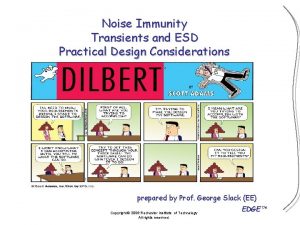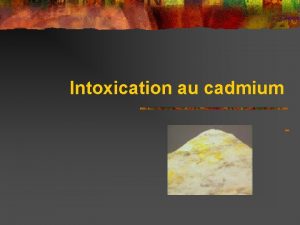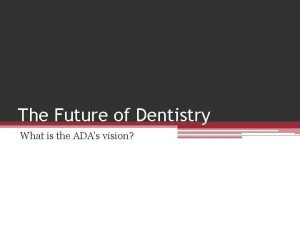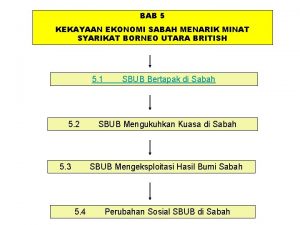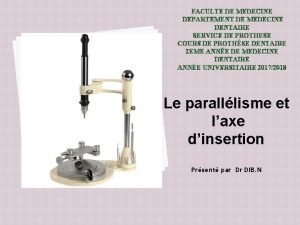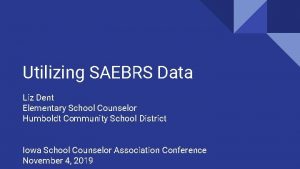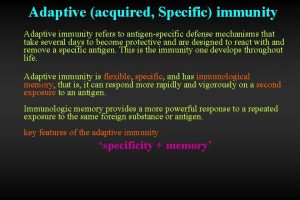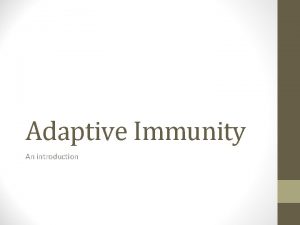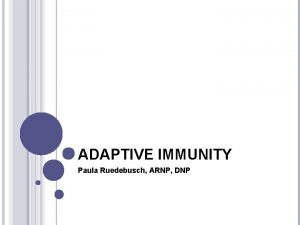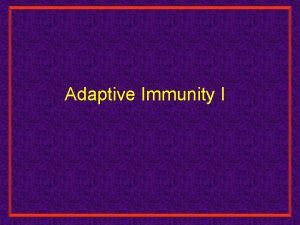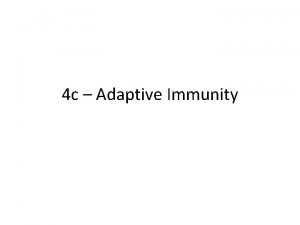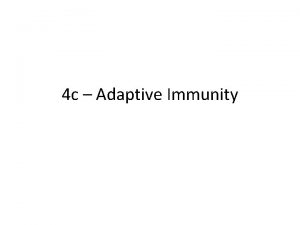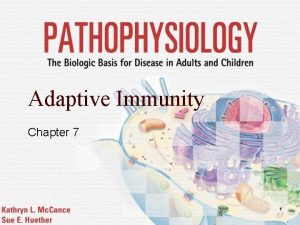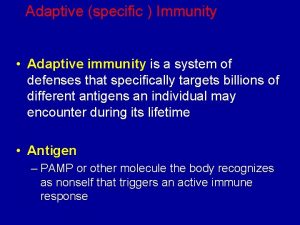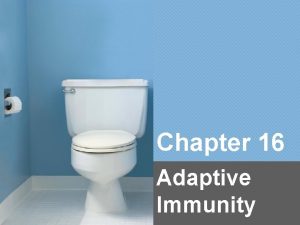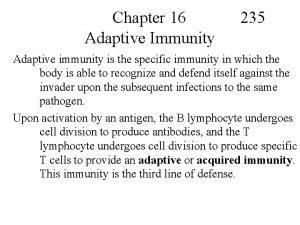AdaptiveAcquired Immunity DENT 516 Adaptive immunity Refers to

















- Slides: 17

Adaptive/Acquired Immunity DENT 516

Adaptive immunity Refers to antigen-specific defense mechanisms that take several days to become protective and are designed to remove a specific antigen. This is the immunity one develops throughout life. There are two major branches of the adaptive immune responses: humoral immunity and cell-mediated immunity.

Humoral Immunity • humoral immunity involves the production of antibody molecules in response to an antigen and is mediated by B-lymphocytes. Cell Mediated Immunity · CMI involves production of cytotoxic T-lymphocytes, activated macrophages, activated NK cells and cytokines in response to an antigen and is mediated by T-lymphocytes.

Antigens • Ags are molecules that elicit an immune response in the body • Ags can be: – Proteins – Polysaccharides – Conjugates of lipids with • Proteins (lipoproteins) • Polysaccharides (glycolipids)

Antigens II • Ags that enter body from environment include: – – Inhaled macromolecules; e. g. , cat hair proteins asthma Ingested macromolecules; e. g. shellfish proteins allergy Molecules introduced beneath the skin; e. g. splinter, vaccine Exogenous antigens · Ags generated within the cells of the host: Proteins encoded by viral genes that have infected a cell Aberrant proteins that are encoded by mutant genes; e. g. proteins from mutated genes in cancer cells Endogenous antigens

Antigen Presentation Initial immune response to any Ag requires the Ag be recognized by a T cell. This is best exemplified by AIDS w/loss of CD 4+ T cells. Dendritic cell B cell Two categories of Ags are processed and presented to T cells by different mechanisms: Exogenous Ags Endogenous Ags T cell activated; cytokines released; Th 1, activate M ; Th 2, activate B cells

Exogenous antigens • E. Ag’s (inhaled, ingested, injected), taken up by APCs: – Phagocytic cells; dendritic cells, macrophages – B lymphocytes (produce antibodies) • APCs engulf Ags by endocytosis (endosome-lysosome) Ag degraded into short peptides displayed at cell surface nestled w/i a class II histocompatibility molecule recognized by CD 4+ T cells

Endogenous Antigens • Ags that are generated w/i a cell; e. g. , Mt bug, viral proteins in infected cells • Peptides displayed at cell surface nestled w/I a class I histocompatibility molecule • Recognized by CD 8+ T cells • CD 8+ T cells are cytotoxic • Have machinery to destroy infected cell T cell activated; kills infected cell

B Lymphocytes: A Special Case • • Process Ag by MHC II pathway but: B cells engulf Ag by receptor mediated endocytosis BCRs are surface antibodies anchored in plasma membrane Affinity of BCR for an Ag epitope is so high that the B cell can internalize the Ag at concentrations thousands of times smaller than needed for a macrophage CD 4+ T cell recognizes displayed Ag and is stimulated to release cytokines These stimulate B cells to grow into a clone of cells; plasma cells These plasma cells synthesize BCRs with identical binding site for the Ag epitope but w/o the transmembrane tail The Abs are secreted release Th 2 cytokines



Clonal Expansion

Types of T cells




 National archives gb rail 253/516
National archives gb rail 253/516 Difference between acquired immunity and innate immunity
Difference between acquired immunity and innate immunity Adaptive noise immunity
Adaptive noise immunity Lupus
Lupus Dent sps bumc
Dent sps bumc Sps bu dental
Sps bu dental Dent jaune cadmique
Dent jaune cadmique Strane svijeta
Strane svijeta Dent connect
Dent connect Dent toplam arz
Dent toplam arz Les dents temporaires
Les dents temporaires Sjever jug istok zapad
Sjever jug istok zapad Ace tray taste who dent
Ace tray taste who dent Hqlabs
Hqlabs Kekayaan ekonomi sabah
Kekayaan ekonomi sabah Sustentation dentaire
Sustentation dentaire Dent jaune cadmique
Dent jaune cadmique Liz dent
Liz dent


